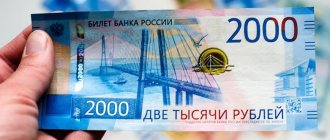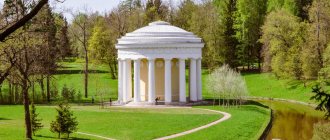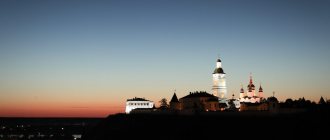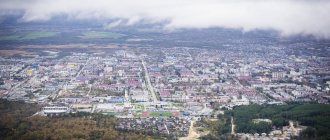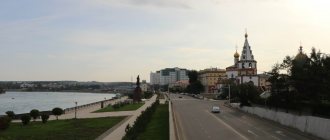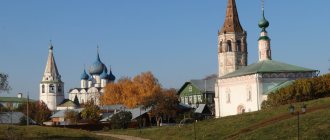See cable-stayed bridges
There are three new bridges in Vladivostok that everyone should see. All of them were built during preparation for the APEC summit, which took place in Vladivostok in 2012. And if one of them, the low-water bridge across the Amur Bay , can be “slipped” without noticing on the way from the airport (although it is one of the longest bridges in Russia - its length is 4364 meters), then it is impossible not to pay attention to the other two .
Both of them are cable-stayed and are located in the city center. The Golden Bridge is a cable-stayed bridge across the Golden Horn Bay north of the Eastern Bosphorus. Here, of course, it is important not to confuse Vladivostok with Istanbul, although the similarity is amazing - in names, bridge designs, and even water areas. Driving across the bridge, you can see two ports in the Golden Horn Bay, commercial and fishing, as well as ship repair enterprises.
And another bridge - Russky , so grandiose that its image was even placed on the new 2000 ruble banknote. It has the world's largest span among cable-stayed bridges - 1104 meters. The Russian Bridge connects Eastern Vladivostok across the Bosphorus Strait with Russky Island, which in Soviet times was a closed military facility where military units were located. With the advent of the bridge, everything changed - on an island with an area of 97 km2, the campus of the Far Eastern Federal University and the Primorsky Oceanarium, similar to a huge flying saucer, were built.
Vladivostok 2000, finally, you can hold in your hands
Vladivostok
Vladivostok is one of the most interesting cities for travel in Russia. Primorsky Krai, in general, ranks 7th in the National Tourism Rating according to the criteria of tourist attractiveness. This is facilitated by the Pacific exoticism of the region, the variety of attractions and tourist activities.
Guest card "Vladivostok Pass"
“Vladivostok Pass” is both a complete guide to the city and a card with discounts on tourist attractions. Several tariffs are available for guests of Vladivostok:
- Bear Pack . Includes only a package of discounts and privileges.
- Tiger Pack . A package of discounts and privileges, a guide and 2 walking routes around Vladivostok.
- Leo Pack . A package of discounts and privileges, a guide and 2 walking routes around Vladivostok, passes to museums and galleries, an audio guide.
Discounts and ordering privileges are provided by popular tourist and entertainment venues in the city. Among them: branded souvenir shops, 25 cafes and restaurants, 5 bars, bicycle rental service.
The card is activated by making the first purchase/order with partners. The guest card is valid for 10 days from the date of activation. You can purchase a card online, on the official website, or on site. The guest card is sold in souvenir and bookstores in the city, in the Tiko minimarket chain and in the Aloha capsule hotel.
Find out more about the Vladivostok Pass guest card
Main attractions
Surprisingly, the most recognizable symbols of Vladivostok are the new facilities created in preparation for the APEC summit.
Cable-stayed bridges
Golden Bridge
© Anna Kudryavtseva
The idea of building bridges connecting the districts of Vladivostok, as well as the city with Russky Island, was voiced back at the end of the 19th century. Nikita Khrushchev planned to build a bridge in Vladivostok that would be superior to the Golden Gate in San Francisco. But they carried out their plans only in the new millennium. In 2012, 2 cable-stayed bridges were erected in the city, which instantly became the hallmark of Vladivostok and were included in the top five largest bridges in the world.
The Golden Bridge connects the city center with remote areas on the opposite shore of the Golden Horn Bay. On the bridge, in addition to 6 lanes for car traffic, there are pedestrian paths. From here you can admire the panorama of the city and the Golden Horn Bay. The length of the Golden Bridge is 1388 meters.
The Russian Bridge connects the mainland with Russky Island in the area of Cape Novosilsky. The length of the bridge is 1885 meters. The bridge is included in the Guinness Book of Records for the largest span: 1104 meters. The image of the Russian Bridge adorns the new 2 thousand ruble banknote. You can only drive across the bridge - there are no pedestrian paths on the structure.
Lighthouse "Tokarevskaya cat"
Tokarevsky lighthouse
© DK1974
Named after the sand spit on which it is located, the Tokarevskaya Kosh lighthouse has been a navigational landmark for ships and merchant vessels entering Vladivostok through the Eastern Bosphorus Strait for more than 100 years. The lighthouse was built in 1910 and has survived to this day in the same form. It is a round white tower 12 meters high.
The location of the lighthouse is notable for the fact that it is considered the extreme point of the continent - beyond that lies the Pacific Ocean. At low tide you can walk along the embankment to the lighthouse; at high tide you can walk ankle-deep in water. Spotted seals can sometimes be seen near the lighthouse. If you have time, it is worth arriving here at dawn.
Voroshilov battery
The fortification structure is located in the southern part of Russky Island. The battery was erected to protect the eastern sea borders in the 30s of the last century. The battery is a ground artillery, military bunker consisting of three floors. The fortifications were so powerful that they could withstand even a direct hit from an air bomb. Now tourists can not only go down and walk through the dungeon, but also take a blank shot.
Cape Tobizina
Cape Tobizina
© M Marik72
Another attraction of Russky Island is the amazingly beautiful Cape Tobizin. The southernmost cape of the island has a rocky and steep landscape. The cape is connected to the peninsula by a low and rocky isthmus. From a height of 15-meter cliffs you can dive into the open sea, and on the stone slabs you can relax and sunbathe.
Vladivostok fortress
A large-scale fortification structure surrounds Vladivostok with a stone ring with a total length of 100 km. Construction of the grandiose fortress began in 1889 and was completed by 1918. Now, this is the only surviving 19th-century fortress in Russia. Currently, most of the fortress is abandoned. Tourists can visit the section of the Nameless Battery, where the Vladivostok Fortress Museum is organized. The outdoor exhibition is a collection of coastal and naval guns. In the inner part, in casemates, models of ships and samples of sailors' weapons are displayed. The observation deck offers a magnificent panoramic view of Vladivostok.
Nikolaevsky Triumphal Gate
Nicholas triumphal arch
© Natalia Konnova
One of the oldest buildings in the city, the Crown Prince's Arch, was erected in 1891 for the arrival of the future Emperor Nicholas. The Tsarevich visited the city as part of his trip around the world. In honor of this event, Prudovaya Street was beautified and the Triumphal Gate was installed. The arch was built in the Russian-Byzantine style with decor in the form of colored ornaments and a double-headed gilded eagle on top. Local residents believe that those who pass under the arch will certainly find happiness in life.
Primorsky Oceanarium
Primorsky Oceanarium
© Olga Yavkina
The newest aquarium amazes with the scale and completeness of its exhibition. The route through the aquarium follows the order of the origin of life on earth. Visitors first go through interactive elements, then learn many interesting facts through living inhabitants. In the seaside aquarium you can see shows with the participation of dolphins, beluga whales, walruses, fur seals, penguins and Baikal seals. The aquariums contain a wide variety of fish and marine mammals from around the world, including several species of sharks.
Read more about the sights of Vladivostok
What else to see
After seeing the top sights, go for a leisurely walk along one of the city’s embankments. Each has its own flavor and its own audience.
Embankments of Vladivostok
Korabelnaya embankment
© Anna Kudryavtseva
Tsarevich Embankment is the city's newest walking area. At the end of the embankment there is a ship repair plant, the foundation of which was attended by Tsarevich Nikolai Alexandrovich. Recently, the area near the plant was put in order - granite pavement was laid and a parking lot was installed. The embankment has become the most popular place for rollerblading, skateboarding, and biking. Here you can rent all the necessary equipment. There is a large playground with evening lighting for children.
Sports embankment is the center of the city's evening entertainment. People come here to admire the sunset, stroll along the pedestrian Fokina Street next door, and watch the light and music fountain show. You can visit a small amusement park with children. Sports Harbor is also often chosen as a place for dinner - there are several good restaurants serving seafood and Asian cuisine.
Korabelnaya Embankment is located near the Golden Bridge. From here you can take impressive photos of this architectural structure, as well as warships - the headquarters of the Russian Pacific Fleet is located near the embankment. The famous missile cruiser "Varyag" is located here and you can visit the museum ships: "Warship Red Pennant" and "Submarine S-56".
Botanical Garden and Rock Garden
The Vladivostok Botanical Garden covers an area of 169 hectares in the Sovetsky district. Ecological routes are laid out throughout the territory and thematic excursions are conducted. Guests of the region can walk through the virgin Ussuri taiga, see more than 20 species of magnolias and a tree that survived the ice age - ginkgo biloba. Since the garden is located outside the city limits, it is worth going here for at least half a day.
Vladivostok, so close to the Japanese islands, has its own corner of the Land of the Rising Sun. A small Japanese landscape park has been designed on the territory of the Vladivostok University of Economics and Service. The project was developed by Japanese designers in honor of the twin cities of Vladivostok and Toyama. Even pebbles and gravel were exported from Japan. Trees and shrubs were taken from the Vladivostok Botanical Garden.
Millionka
Pogranichnaya Street, bordering the Millionka quarter
© Maxim Starostin
The historical quarter of Millionka is the most colorful place in Vladivostok. These are several ancient Chinese quarters, bounded by Aleutskaya, Semenovskaya, Fokina and Pogranichnaya streets. A spontaneous settlement of the Chinese arose here at the end of the 19th century. According to one version, the Millionka quarter was called ironically, because of poverty. According to another, this was the name of the house in which several thousand Chinese lived.
Staraya Millionka was something like Moscow Khitrovka. In the old days, there were bars and entertainment establishments here: brothels, opium dens, gambling houses. Chinese robbers, the Honghuzes, were hiding from justice on Millionka: the laws of the empire did not apply in the area, the Chinese diaspora was in charge of everything. Until now, among the residents of Vladivostok there are legends about the underground labyrinth of Millionka: supposedly smugglers hid their valuables here and criminals hid, and secret tunnels lead to China. The main urban legend says that Kolchak’s gold is hidden here.
The colorful Chinatown was liquidated in the 30s by the NKVD. But even now, walking through these neighborhoods, you can feel the spirit of the old multinational Vladivostok. There are excursions around Millionka with mystical stories - if you have time, it’s worth signing up for such a walk.
"City within a city" from Mazda
An ultra-modern public space, reminiscent of Zaryadye Park in Moscow, recently opened near the Mazda Sollers engine production workshop in the Lugovaya district. Initially, the space was closed; it was planned to organize parking here. But a team of local architects convinced them to build a recreation area for citizens and tourists.
The space is divided into 3 zones: “Street”, “Square” and “Square”. The “street” is comfortably zoned - traffic is separated from recreational areas, there are benches where you can sit opposite each other. On the “Square” there is an abundance of wooden elements, there is a stage fenced off by a sakura alley. The “Square” displays works by Russian and Japanese artists.
Frigates
Frigate "Pallada"
© Natalia Konnova
Vladivostok is the only port city in Russia to which two sailing frigates are assigned: “Nadezhda” and “Pallada”. Also, only Tokyo has 2 sailboats. Both sailboats are training ships and are manually controlled. The sight when one of them comes out into the Amur Bay is amazing - in appearance, the sailboats are reminiscent of past centuries and look very atmospheric among the hills and islands.
Take a walk along Svetlanskaya Street
The main street of Vladivostok is Svetlanskaya , named after the frigate Svetlana, on which Grand Duke Alexei Alexandrovich arrived in the city in 1873. It's funny that before this the street was called American. Local residents say that it looks like Nevsky Prospekt - perhaps this is due to the fact that architects were invited mainly from St. Petersburg to build Vladivostok at the end of the 19th century.
Svetlanskaya Street is located parallel to the Golden Horn Bay, and there are many city attractions: the monument to the Fighters for Soviet Power on the square of the same name, the Vladivostok Circus, the buildings of the Kunst and Albers trading house, the house of the first civilian resident of Vladivostok, the merchant Yakov Semenov, the monument to the famous American Eleanor Prey, thanks to whose letters there are unique photographs and descriptions of the life of townspeople of the early 20th century, a monument to Vladimir Vysotsky, the Versailles Hotel, where the city's first restaurant called the Golden Horn was located, the Museum of the History of the Far East named after V.K. Arsenyeva and others. You can get great pleasure from the promenade.
View of Svetlanskaya street
Section 2. Geographical location
The entire Vladivostok district is located on the territory of the Muravyov-Amursky Peninsula, including the village of Trudovoye.
This territorial unit includes:
- Russian Island;
- Trudovoye village;
- Popov and Reineke islands;
- Beregovoe village.
There are plenty of advantages to this arrangement. First of all, it is impossible not to mention that the Golden Horn is an excellent bay for mooring ships. There are huge fishing and trading ports here. It follows from this that entrepreneurs involved in this business will never ask, speaking about Vladivostok: “Which region?”
The largest rivers in the region are the First and Second, Sedanka, Explanations and Bogataya.
The hill called the Eagle's Nest is the highest point of the city of Vladivostok, or rather its historical part; on the outskirts there are places even higher.
Enter the GUM courtyard
Vladivostok was founded as a military post in 1860, and received city status only twenty years later. All these years, the port was actively developing, a little later the construction of the Trans-Siberian Railway began, so entrepreneurs from Europe flocked to Vladivostok.
Among the first to appear in Vladivostok were Gustav Kunst and Gustav Albers , who in 1864 opened the main division of their company here and invited a German architect, who rebuilt a complex of red brick buildings in the neo-Baroque style. In 1884, the first European, incredibly luxurious department store was inaugurated in Vladivostok, where you could purchase a variety of goods from Europe and Asia.
During the Soviet years, the trading house was renamed GUM, and now its restored courtyard houses shops, cafes and restaurants. For example, gastrobistro Gusto, known for its trendy breakfasts and wine dinners, or eclair “Flash” with elegant desserts and good coffee.
Scheme of the old GUM courtyard
Nikolaevskaya Triumphal Arch
On the Admiral's embankment there is an arch built for the visit of the Tsarevich for the opening of the Trans-Siberian Railway. During Soviet times, the arch was demolished and restored in 2003. The interesting structure was built in the Russian-Byzantine style on four pillars, turning into elegant columns. The arch is located near Korabelnaya Embankment.
Eat crab at Zuma restaurant
A large-scale gastronomic acquaintance with Vladivostok should begin with the Zuma , famous for its crabs and scallops not only throughout Russia, but also in Asia. This is where tourists from Japan, China, South Korea and other countries come to eat plenty of fresh seafood and fish: crabs, scallops, oysters, sea urchins, mussels, tuna, salmon, etc. Even the rolls here are not simple, but golden: no rice at all, but with crab, tuna, salmon, red caviar and a leaf of gold leaf. The presentation of the dishes is no less spectacular - seafood is shrouded in clouds of dry ice, wagyu on pine needles is seared with a torch and sprinkled with gold seasoning, and blue-skinned Pacific halibut is hidden under thin slices of pear.
Over 11 years of work, chef Egor Anisimov and manager Maria Inozemtseva have created a strong restaurant project, which many call the “gastronomic showcase of Russia” in Asia. And if earlier it was difficult to get here due to the rush of Asian guests, now tourists from all over Russia rush to Vladivostok to taste delicious Kamchatka crab at Zuma. For several years now, the restaurant has been the organizer and headliner of the “Hold the Crab” and “On the Crest” festivals, during which restaurants in many Russian cities present chefs’ signature dishes made from Far Eastern seafood.
Seafood Plateau
Crush the cheburek cloud
Another restaurant attraction of Vladivostok is the city’s first restaurant serving Georgian cuisine, “Supra”. There are two main hits here, for which people line up all year round - the cheburek cloud, aka an inflated cheburek made from thin dough with different fillings, the eating of which is a whole performance (first you need to deflate it, then roll it), and khinkali. The dough for them is made from special “reinforced” Japanese flour, so they are tender with a glossy surface, the fillings are varied: there are shrimp, scallops, crab, lamb, tom yum sauce and cherries. “Supra” even got into the Guinness Book of Records - to date, 5 million khinkali have been eaten here!
Cheburek cloud
Climate
The climate in Vladivostok is monsoonal. Winter is cold and dry, with a predominance of clear days. Spring is long and cool, with frequent weather changes. Summers are warm and humid, with the highest proportion of annual precipitation. Autumn is short, with a gradual decrease in precipitation towards winter. The warmest month in the city is August (+19.8 °C), and the coldest month is January (−12.3 °C).
The swimming season in Vladivostok, as a rule, lasts from July to September. The warmest sea is observed in August and early September, when the water warms up to 24-26 °C.
Have lunch at the Chifanka
In Vladivostok, inexpensive cafes and restaurants run by the Chinese are called “Chifanki.” They are located in the city center and in shopping centers, where trade in a variety of goods from China is brisk. Not only the Chinese visit such cafes; local residents also treat them with special respect: they are inexpensive, unusual and satisfying. The portions are large, the prices are low, there are a lot of fried and spicy dishes. On the approach to Chinese cafes with for some reason the Russian names “Dobrynya”, “Nadezhda” and “Friday”, guests are loudly greeted by barkers who promise the crispiest pig ears and the juiciest fern salad.
You don’t have to go to China, but go to a “chifanka”
Tsesarevich Embankment
The embankment is quite young. It was opened in 2012 to mark the anniversary of the oldest shipyard. When the enterprise was founded back in the 19th century, the Tsarevich, who later became Russian Tsar Nicholas II, was present. Hence the name of the embankment.
Life is in full swing here. Young people love to rollerblade and skateboard, and older people come to breathe the sea air and feel like a part of society.
Buy strange Chinese products
In search of authentic Chinese products, you should go to the local market - there is a lot to see. Moreover, you can look endlessly, because it is impossible to make out what kind of numerous products are laid out on the shelves without outside help. You shouldn’t count on the salesperson at the cash register - few of them speak Russian. But only here you can find soft “centenary” eggs, canned chicken feet, monosodium glutamate in kilogram bags, green fermented tofu, ant tea, a variety of pickled vegetables, seasonings and sauces of unimaginable colors.
Chinese shop assortment
Try North Korean cuisine
“Pyongyang” in Vladivostok , which has been operating for 15 years without loud advertising or bright signs. When you enter a small space with photo wallpapers on the walls, consisting of a common room and a couple of booths with teppans built into the tables, you don’t expect to get delicious dishes. Especially the dishes of harsh North Korea. The colorful picture menu offers kimchi, bibimbap, dangmyeon zabchae, durub namul, potato or green soybean cakes, a variety of soups and an assortment of raw meats (pork, beef, duck) for cooking on the stove. You can cook the meat yourself or ask for help from modest waitresses who speak little Russian, but can sing in Korean. For dessert there are glazed bananas, battered corn and makoli (Korean rice kvass). It’s worth paying tribute to - they cook here conscientiously!
Modest interior of the Pyongyang restaurant
Take a boat ride
Due to the unique location of Vladivostok, the city is washed on all sides by bays entering the Sea of Japan. Tourists are offered many routes and proposals for traveling by water. You can take a ride around the peninsula on a catamaran: pass under the cable-stayed bridges, see the heart-shaped Skrypleva island, and the Tokarevsky lighthouse. Or go on a full-day boat trip along Peter the Great Bay in the Khasansky district, towards the Gamow Peninsula and the Far Eastern Marine Biosphere Reserve, where cute seals (spotted seals) live.
You can make a stop at Vityaz Bay, where the scallop farm of former Moscow developer Vasily Grebennikov . The farmer personally greets guests, treats them to the freshest scallops and tells the history of the area. In Soviet times, there was a research center for the Pacific Fleet base here, where combat dolphins were trained, and at the bottom of the bay lie the wreckage of several ships, which attract octopuses and divers.
Elephant Rock
Who founded Vladivostok? History of Vladivostok
History of Vladivostok, year of foundation of the city, attractions, hotels, entertainment, reviews of city guests.
The city of Vladivostok is the largest in the Primorsky Territory and in the entire Far East of Russia. It is not only the largest port on the Pacific coast of Russia, but also a developed center of industry, science, culture, and transport.
Vladivostok was founded in 1860, on July 2. It received city status almost 20 years later. Previously, the territory of modern Vladivostok was part of the Bohai state (698-926). Since the 10th century, Vladivostok belonged to the Khitans, and later to the Jurchens. From the beginning of the 13th century, several Jurchen states of Eastern Xia were already located on the territory of Primorye, but after the Tatar-Mongol invasion they were all destroyed. Later, the territory became completely deserted and was practically not mentioned until the 19th century.
During the time of Tsarist Russia, the territory of today's Primorsky Territory belonged to China. After the signing of the treaty in 1858, it became the property of Russia.
Vladivostok, located on the coast of Peter the Great Bay, became known to Europe only in 1852, when whalers accidentally wintered in one of the city’s bays. In 1856, the Golden Horn Bay was visited by the British. In 1859, Governor General N.N. Muravyov-Amursky paid special attention to this bay. On his recommendation, she was named as well. Later, the military post on the shores of the bay was named Vladivostok.
On July 2, the post received the official name Vladivostok. This is confirmed by the entry in the Manchu watch log. The soldiers and sailors began building the post. This day is the official date of the founding of Vladivostok.
A month after the first exit to the shores of the Golden Horn Bay, the corvette "Griden" arrived, whose task was to guard the Vladivostok post and provide it with supplies.
Only in September 1991, Boris Yeltsin signed a decree, after which the city became open.
After the collapse of the USSR, big changes took place: small joint-stock companies and mixed companies increased the scope of their activities and began to cooperate with foreign companies. The transport system began to actively develop, and work with coastal fishing enterprises decreased. The standard of living has decreased – this also affected the city’s economy.
However, with the beginning of the new millennium, the situation in the sphere of economics and social policy changes.
But Vladivostok retains its status as an important trade and financial center, transport and industrial, this creates the preconditions for the long-term development and growth of the city.
According to estimates at the beginning of 2009, the population of the Vladivostok urban district included 605 thousand. The main part (96%) is the population of the city of Vladivostok itself. It follows that the city's population is about 580,990 inhabitants. The population of Vladivostok begins to gradually decrease, but the decline is almost completely compensated by immigration.
Visit as many lighthouses as possible
Primorye is a land of lighthouses, which can be seen both from water and on land. The most popular lighthouse is Tokarevsky , located 20 minutes by car from the city center. Local residents and tourists love to watch sunrises and watch sunsets here. The lighthouse has stood on the Tokarevskaya cat since 1911 - this term has nothing to do with the animal, but refers to an elongated sandbank. Indeed, you can only get close to the active Tokarevsky lighthouse along a narrow strip of land 160 meters long, which is hidden under water during high tides.
Three more of the most attractive lighthouses: Basargin lighthouse , which can only be seen from the water (this is a secret military facility), Busse lighthouse in the village of Slavyanka, Khasansky district, and Rudny lighthouse , located 540 km from Vladivostok next to the famous Two Brothers kekurs. In total, there are about 40 lighthouses in the Primorsky Territory.
Tokarevsky lighthouse
